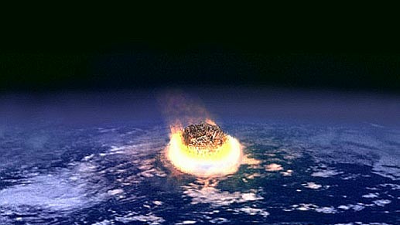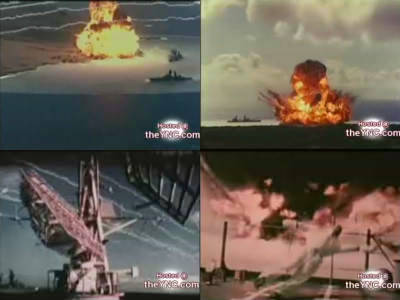A movie that simulates 'If you have an asteroid collide with the ocean' with super high image quality of 4K · 60 fps is released

In the movie world such as " Armageddon " and " Deep Impact ", the moment when asteroids and meteorites collide with the earth has often been drawn. About the collision of such an asteroid, the American Atmospheric Research Center (NCAR) has released a movie simulating "What actually happens when an asteroid falls into the sea" at ultra-high quality of 4K · 60fps.
Mesmerizing video shows what would happen if an asteroid crashed into Earth's oceans
https://mashable.com/article/asteroid-crashes-into-ocean-simulation-video/
NCAR uses a data set called " ( Deep Water Impact Ensemble Data Set ) " (PDF file) created by Galen Gisler and John Patchett who works for Los Alamos National Laboratory , and what kind of asteroids Simulate whether shape and scale waves occur. The result can be seen in the following movie.
Visualization of the Deep Water Impact Ensemble Data Set - YouTube
The simulation assumes a situation where an asteroid with a diameter of 250 m hits the sea surface at an angle of 45 degrees. When an asteroid or meteorite enters the atmosphere, " air burst (aerial explosion)" may occur. The model on the left is not supposed to be an air burst, the right side is a model assuming an air burst at 5 km above the sky.
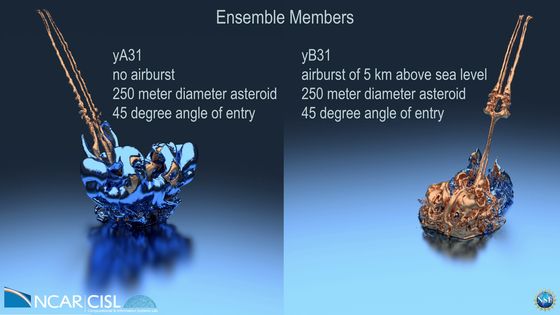
The state of the sea water where the asteroid falls to the sea and winds up when the atmospheric region assumes 23,000 m is displayed in the upper part of the following image. Its height is maximum and it exceeds Everest which is 8848 m in altitude. The area is approximately 1100 square kilometers, which is about 14 times that of New York / Manhattan Island .
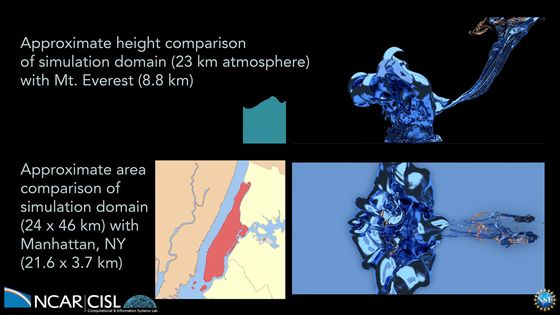
First of all, a collision simulation when no air burst is assumed. A meteorite falls to the sea ... ...
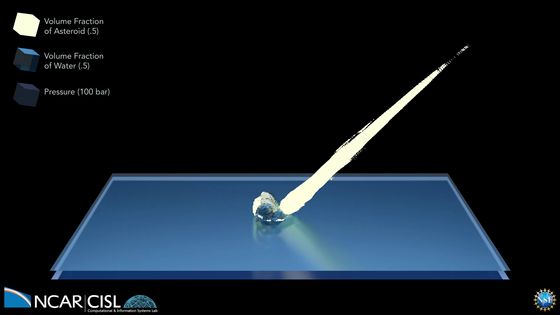
A tremendous amount of sea water is rolled up, and many waves are generated.
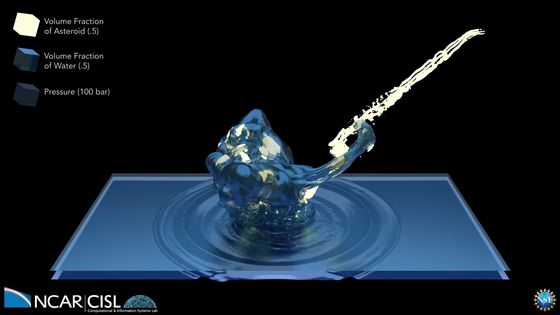
As the mass of seawater wraps around the fragments of asteroids in front of the falling point, water rises backwards along the asteroid's trajectory at the same time.
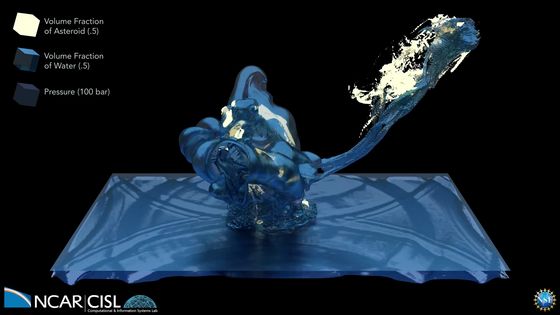
The sea water in the back falls to the sea surface immediately, but the front sea water continues to roll up forward with enormous energy.
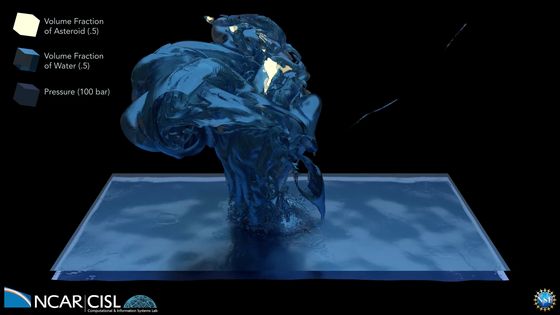
The next case assumes air burst. When you reach the sea ... ...
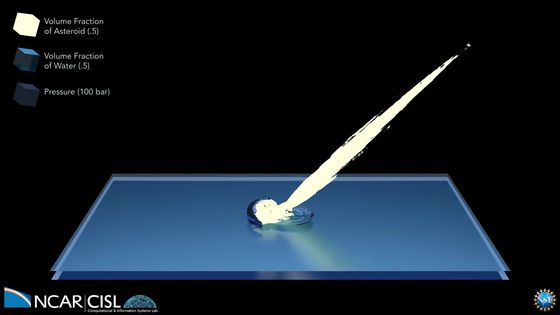
Spreads like fragments of asteroids bouncing off.
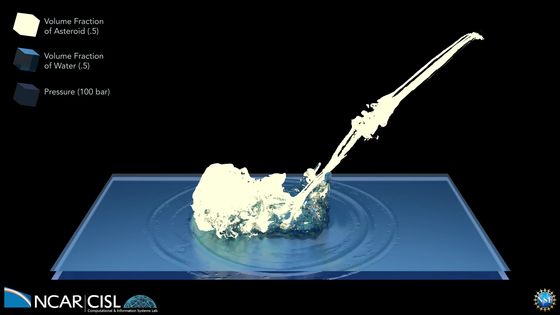
Seawater is rolled up along the asteroid's trajectory behind, but the result is that a large amount of asteroid fragments are scattered ahead of water.
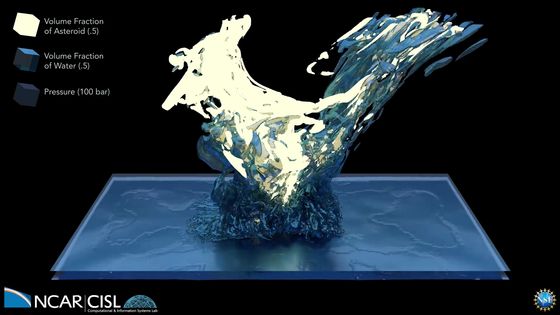
It is like this when comparing the case where there is no air burst and the case of assuming air burst.
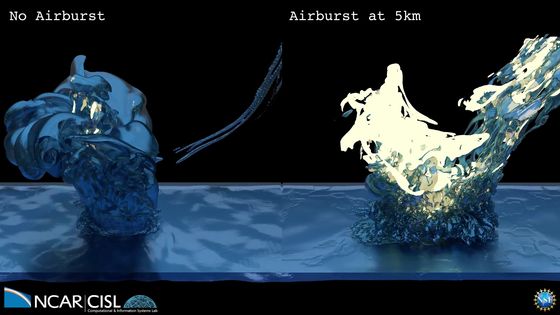
When the upper image does not cause air burst, the state of landing of the asteroid when the lower image causes air burst. If you look closely, you can see that the appearance of landing is quite different depending on whether or not an air burst is occurring.
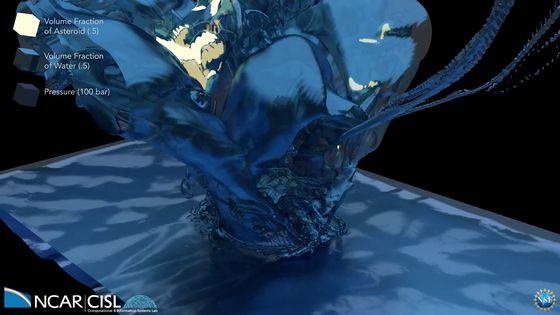
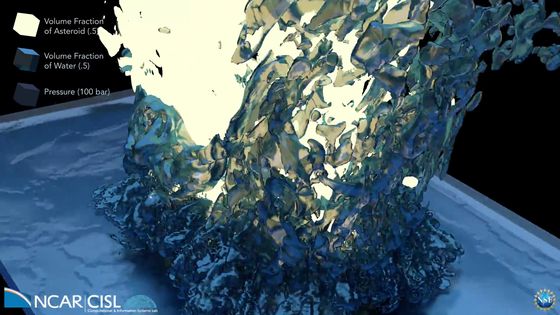
The images below compare only the movement of fragments of asteroids and compare them. When an air burst occurs, the asteroid seems to collide with the sea surface in a state of finely dividing, so it will rebound without sinking into the sea.
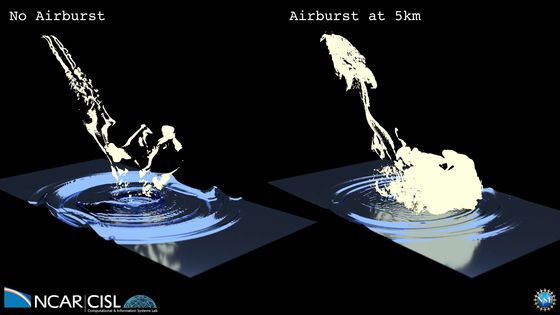
When the collision angle is raised from 45 degrees to 60 degrees with the assumption that air burst did not occur.
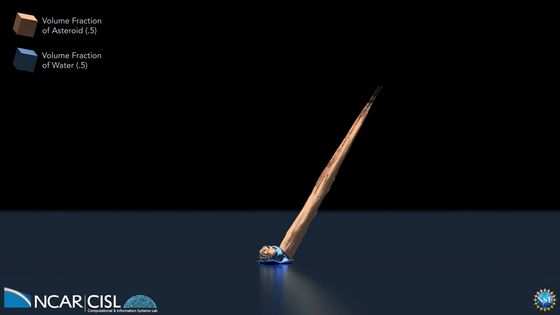
Sea water is turning like a mushroom cloud. In this case, the waves become larger than those of 45 degrees, and it is expected that the damage of the tsunami caused by the asteroid fall will be more enormous.
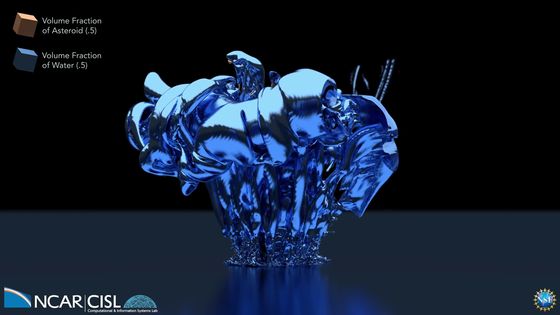
When assuming that an air burst has occurred ... ...
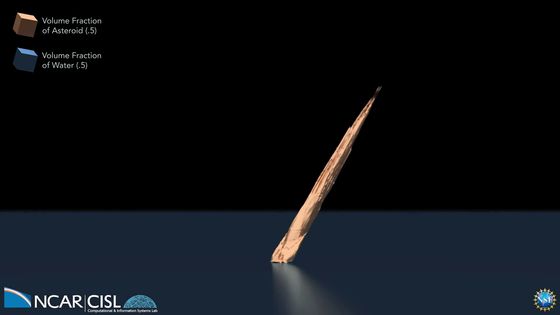
The fragments are rolled up so that asteroids can be crushed further finely on the sea surface and lifted by a large amount of rolling up sea water.
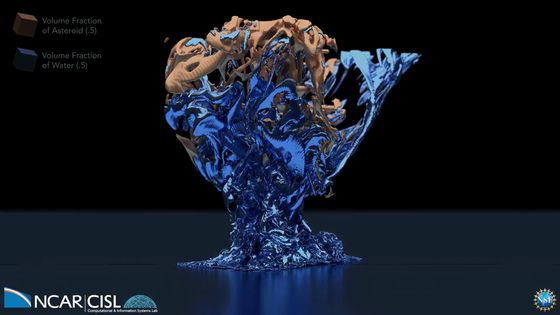
The case where the left did not cause an air burst and the case where the right assumes an air burst. If you do not assume an air burst, the amount of sea water rolled up is obviously large, and you can see well that the extent of the damage is large.
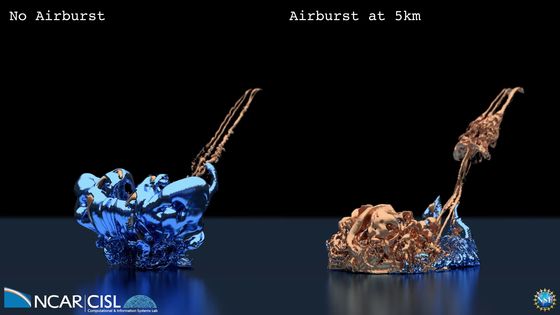
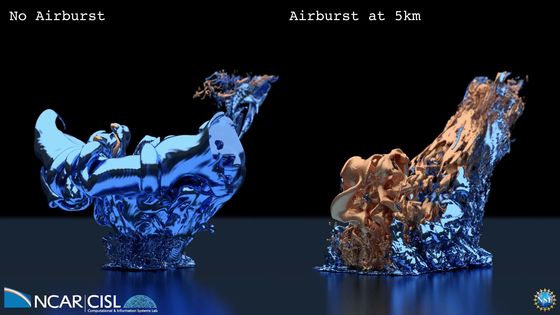
Approximately 70% of the surface of the earth is covered with the ocean, and if an asteroid collides with the earth, the possibility of falling into the ocean is considered higher. Ballyinger crater, which is about 1.2 km in diameter spreading in the state of Arizona, is due to the fall of a meteorite with a diameter of 30 m to 50 m, and the energy at the time of collision is 15 million TNT tons , about 1000 of atomic bomb dropped in Hiroshima in 1945 It is said that it was double powerful. Because the simulation of this time is assumed to be even larger than the meteorite of the Ballerin crater, the damage at the time of a collision is expected to become bigger.
NASA has announced a trial calculation that "the frequency of a 1500-meter-diameter asteroid hitting the Earth will be once in about one million years", but this time simulation will give important results to prepare for any chance Thing. NCAR commented, "This simulation resulted a serious discussion on how the tsunami that occurred over the past 20 years will have on population-rich coastlines."
In Japan, which is an island country surrounded by the ocean, research on similar problems is also being conducted. According to the following paper, when a 500 m diameter celestial body collides with Japan's waters with a water depth of 5000 m, it is expected that the 80 m class tsunami will rush to the coast of Japan after the water level drops until the continental shelf becomes almost shallow That's right.
Tsunami Risk Assessment Associated with Falling Meteorites to the Ocean - Japan Planetary Science Association
(PDF file) https://www.wakusei.jp/book/pp/2013/2013-4/2013-4-207.pdf
Related Posts:

